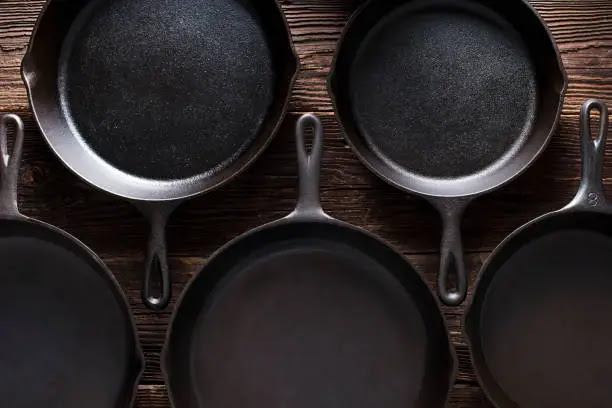Introduction:
Cooking with cast iron is more than just a culinary technique; it's a tradition passed down through generations. Cast iron cookware, known for its durability and exceptional heat retention, is a favorite among home cooks and professional chefs alike. Whether you're searing a steak, baking cornbread, or frying eggs, a well-seasoned cast iron skillet can handle it all. In this guide, we'll explore the benefits of cooking with cast iron, how to properly care for your cookware, and share some tips and recipes to help you make the most of this versatile kitchen tool.
Why Cook with Cast Iron?
Unmatched Heat Retention and Distribution:
- Cast iron cookware excels at retaining and evenly distributing heat, which is essential for achieving the perfect sear on meats or an even crust on baked goods. This makes it ideal for high-heat cooking methods like frying, roasting, and baking.
Naturally Non-Stick Surface:
- When properly seasoned, cast iron develops a natural non-stick surface that rivals modern non-stick pans. This makes it perfect for cooking delicate foods like eggs or fish without worrying about them sticking to the pan.
Versatility in Cooking:
- Cast iron cookware is incredibly versatile. You can use it on the stovetop, in the oven, over a grill, or even on a campfire. It's also great for a variety of cooking techniques, including sautéing, frying, baking, and braising.
Durability and Longevity:
- A well-maintained cast iron skillet can last a lifetime, often getting better with age. Unlike other cookware that may warp, chip, or degrade over time, cast iron is virtually indestructible.
How to Care for Your Cast Iron Cookware:
Seasoning:
- Seasoning is key to maintaining your cast iron cookware's non-stick surface. To season your pan, coat it with a thin layer of vegetable oil and bake it upside down in a preheated oven at 375°F (190°C) for about an hour. Let it cool in the oven before storing it. Regular use and occasional re-seasoning will keep your skillet in top condition.
Cleaning:
- Avoid using soap on your cast iron skillet, as it can strip away the seasoning. Instead, clean the skillet with hot water and a stiff brush or a non-abrasive scrubber. For stubborn food residue, sprinkle some coarse salt into the pan and scrub gently. Rinse with warm water and dry thoroughly to prevent rust.
Storage:
- After cleaning and drying your cast iron cookware, store it in a dry place. If stacking with other pans, place a paper towel between them to protect the seasoning.
Recommended Recipes for Cast Iron Cooking:
Pan-Seared Steak:
- A cast iron skillet is perfect for achieving a restaurant-quality sear on your steak. Preheat the skillet until it's smoking hot, season your steak with salt and pepper, and sear each side for about 3-4 minutes. Finish in the oven for the desired doneness.
Cornbread:
- Cast iron skillets are ideal for baking cornbread. The skillet creates a crispy crust while keeping the inside moist and tender. Preheat the skillet in the oven, pour in the batter, and bake until golden brown.
Skillet Roasted Vegetables:
- Roasting vegetables in a cast iron skillet enhances their natural sweetness and adds a delicious caramelized flavor. Toss your favorite veggies with olive oil, salt, and herbs, and roast in a hot skillet until tender and browned.
Conclusion:
Cooking with cast iron is a rewarding experience that combines tradition, versatility, and exceptional results. With proper care, your cast iron cookware will become a kitchen staple that you can rely on for years to come. Whether you're a seasoned chef or a beginner in the kitchen, cooking with cast iron opens up a world of culinary possibilities. So, fire up your cast iron skillet, and start creating delicious, flavorful meals that will impress your family and friends!



Post a Comment